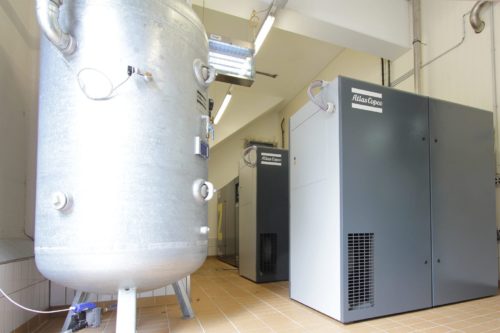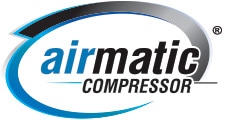Should I go with a wet receiver tank or a dry receiver tank for my air compressor?
The answer is “YES!”
 I can explain. Having adequate receiver capacity is very important for both reciprocating and screw compressors. This prevents rapid cycling in the load/unload or start/stop condition. Having sufficient storage helps make a compressor run more efficiently and extends its lifetime. But a question typically comes up about where to put the receiver; should it be located as wet storage before the air dryer and filters, or should it be placed after the dryer and filters.
I can explain. Having adequate receiver capacity is very important for both reciprocating and screw compressors. This prevents rapid cycling in the load/unload or start/stop condition. Having sufficient storage helps make a compressor run more efficiently and extends its lifetime. But a question typically comes up about where to put the receiver; should it be located as wet storage before the air dryer and filters, or should it be placed after the dryer and filters.
What is Wet and Dry Storage?
Simply, wet receiver is a receiver tank before your filters and dryer—and dry storage is a receiver after your dryer and filters
Benefits of Wet Storage:
- It provides a spot for the air to further cool before entering the dryer
- Allows for air to settle and water and contaminants to drop out
- The compressor’s pressure transducer will have time to properly control the pressure. This can help reduce short cycling.
- If the air compressor water drain fails, the condensate will collect in the bottom of the receiver rather than flooding the air dryer.
Benefits of Dry Storage:
- Peak demand from events from overloading the dryer
- Stored air is pre-dried and pre-filtered, so it will reduce peak loads from effecting the dryer.
- There should be less or no water dropping out in the dry tank, so the air will be ready for large events.
As mentioned above, it is best to have wet and dry receiver tanks. It is usually recommended that 1/3 of the storage be wet air and 2/3 of the storage be dry air.
As a general rule of thumb, you need at least 4 Gallons of storage per CFM that your compressor outputs. If you have a compressor that produces 50 CFM, 200 gallons of storage is recommended. With the 1/3 wet and 2/3 wet rule you should have an 80 gallon wet tank and 120 gallon dry tank.
When in doubt, more storage is better. This will spread out your compressor cycles and provide a long life for your compressor. For further clarification, please call your compressed air specialists to assist with the receiver tank calculations.
 I can explain. Having adequate receiver capacity is very important for both reciprocating and screw compressors. This prevents rapid cycling in the load/unload or start/stop condition. Having sufficient storage helps make a compressor run more efficiently and extends its lifetime. But a question typically comes up about where to put the receiver; should it be located as wet storage before the air dryer and filters, or should it be placed after the dryer and filters.
I can explain. Having adequate receiver capacity is very important for both reciprocating and screw compressors. This prevents rapid cycling in the load/unload or start/stop condition. Having sufficient storage helps make a compressor run more efficiently and extends its lifetime. But a question typically comes up about where to put the receiver; should it be located as wet storage before the air dryer and filters, or should it be placed after the dryer and filters.